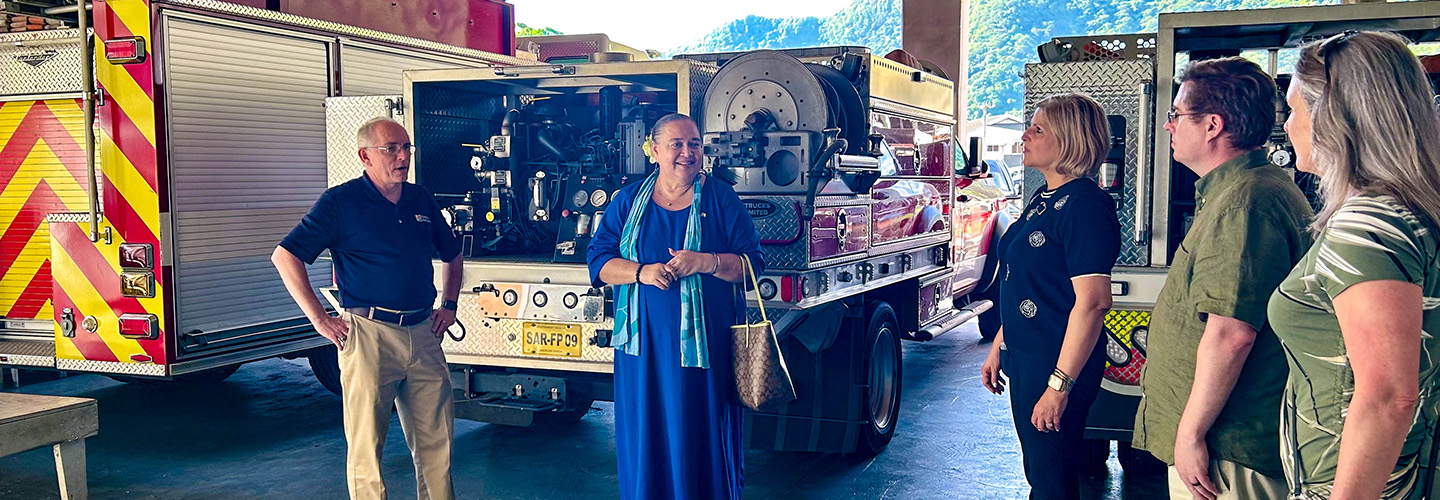The U.S. Pacific territories — American Samoa, the Commonwealth of the Northern Mariana Islands, and Guam — are home to a quarter million Americans. Located thousands of miles from the mainland, these territories are among the most remote regions in the nation. Public safety on these islands can be challenging, especially when it comes to emergency communications.
The First Responder Network Authority (FirstNet Authority) recently sent a delegation to all three island territories to discuss the current status of FirstNet in the territories and to further understand their public safety operations and emergency communications needs. These meetings followed completion of the initial buildout of FirstNet and involved representatives from local, territorial, and federal agencies that support emergency communications on the islands.
The FirstNet Authority delegation held in-depth conversations about the communications challenges faced by public safety on the island territories. The needs ranged from coverage options to adoption strategies and intergovernmental coordination. The delegation spent multiple days in each of the territories identifying and developing plans to address these challenges.
“Going into the Pacific territories was eye-opening and gave me an understanding of their challenges and the ways that we must evolve FirstNet for island territories,” said FirstNet Authority Board member Alexandra Fernández Navarro, who was part of the delegation. She was joined by Board Member Mayor Billy Hewes on the visit and other FirstNet Authority senior officials and public safety advisors.
Real-world use of FirstNet
The delegation also examined the real-world use of FirstNet in the region. Following a structured Post Incident/Event Review process, the FirstNet Authority led an analysis of the challenges and successes in using FirstNet during the response to Typhoon Mawar, which descended on the Pacific islands in May 2023. This was one of the strongest typhoons to hit the area in decades.
The group discussed how the FirstNet Authority and AT&T communicated and supported public safety in the Pacific territories during the incident, how the network and equipment performed, and what other resources could have been helpful. The FirstNet Authority also led sessions to help first responders plan and prepare for future disasters with the help of broadband.
Serving Pacific territory first responders
The FirstNet Authority’s meetings with the territories were highly beneficial to improving our understanding of how the network can best serve the islands. The FirstNet Authority delegation came away with a renewed commitment to ensuring that first responders — especially those in remote regions like the Pacific territories — have access to the benefits of FirstNet.
“Knowing the challenges emergency responders face on a regular basis, the need for reliable communications and resource access can prove even more critical in our remote territories, particularly in times of crisis,” said Board member Mayor Billy Hewes. “Our visit has served to reinforce that understanding, as well as a renewed commitment to the FirstNet Authority’s goal of providing persistent effort, products, and service for America’s territories, tribal, and rural regions.”
First responders in the Pacific territories need access to reliable communications, just like their counterparts in the continental United States. The FirstNet Authority’s founding legislation includes rural coverage requirements so that first responders, even in remote or rural regions of our country, have access to the lifesaving benefits of the network. We remain committed to ensuring public safety’s network reaches all responders across the nation — including those inside and outside the continental United States.




















